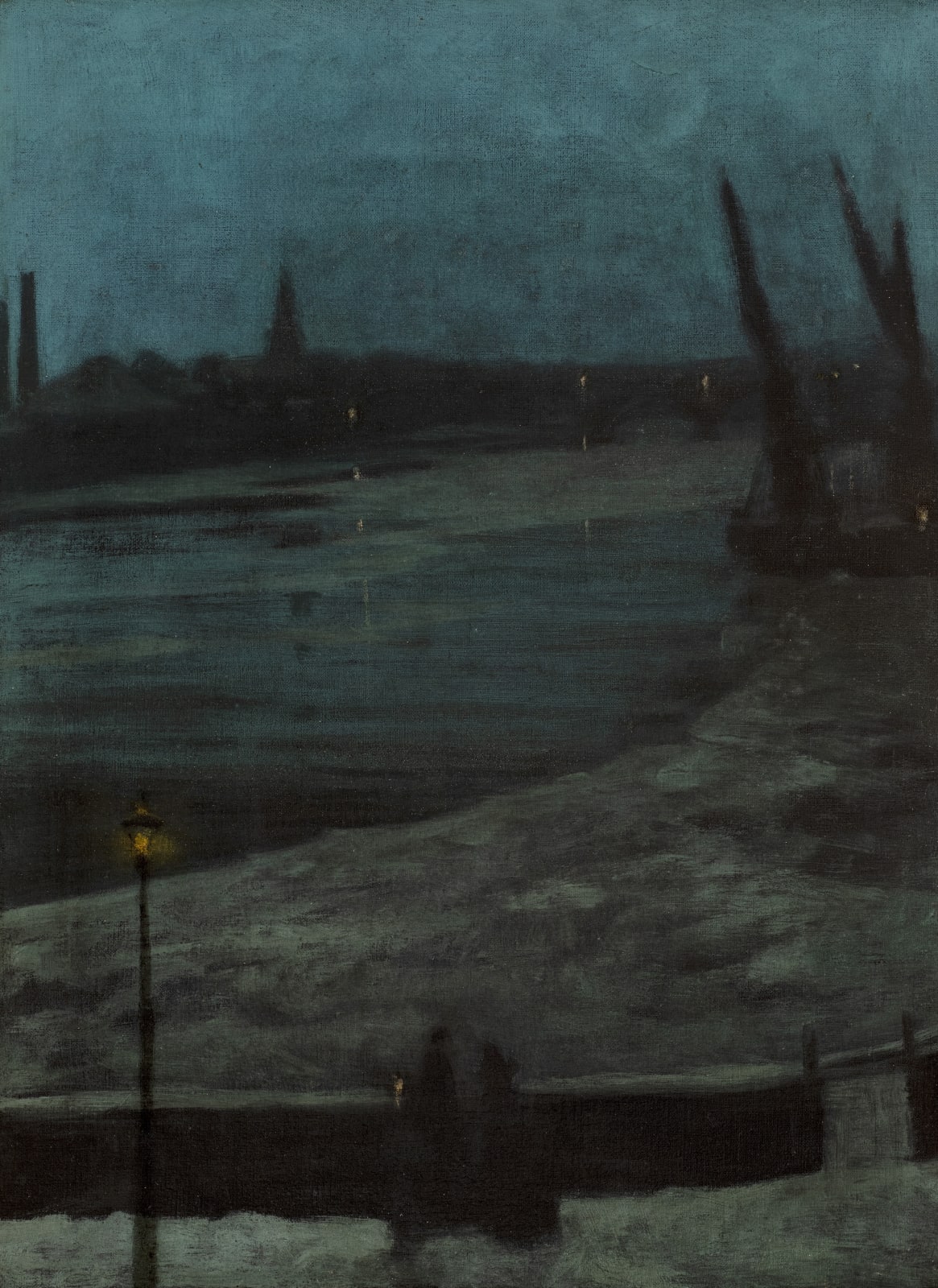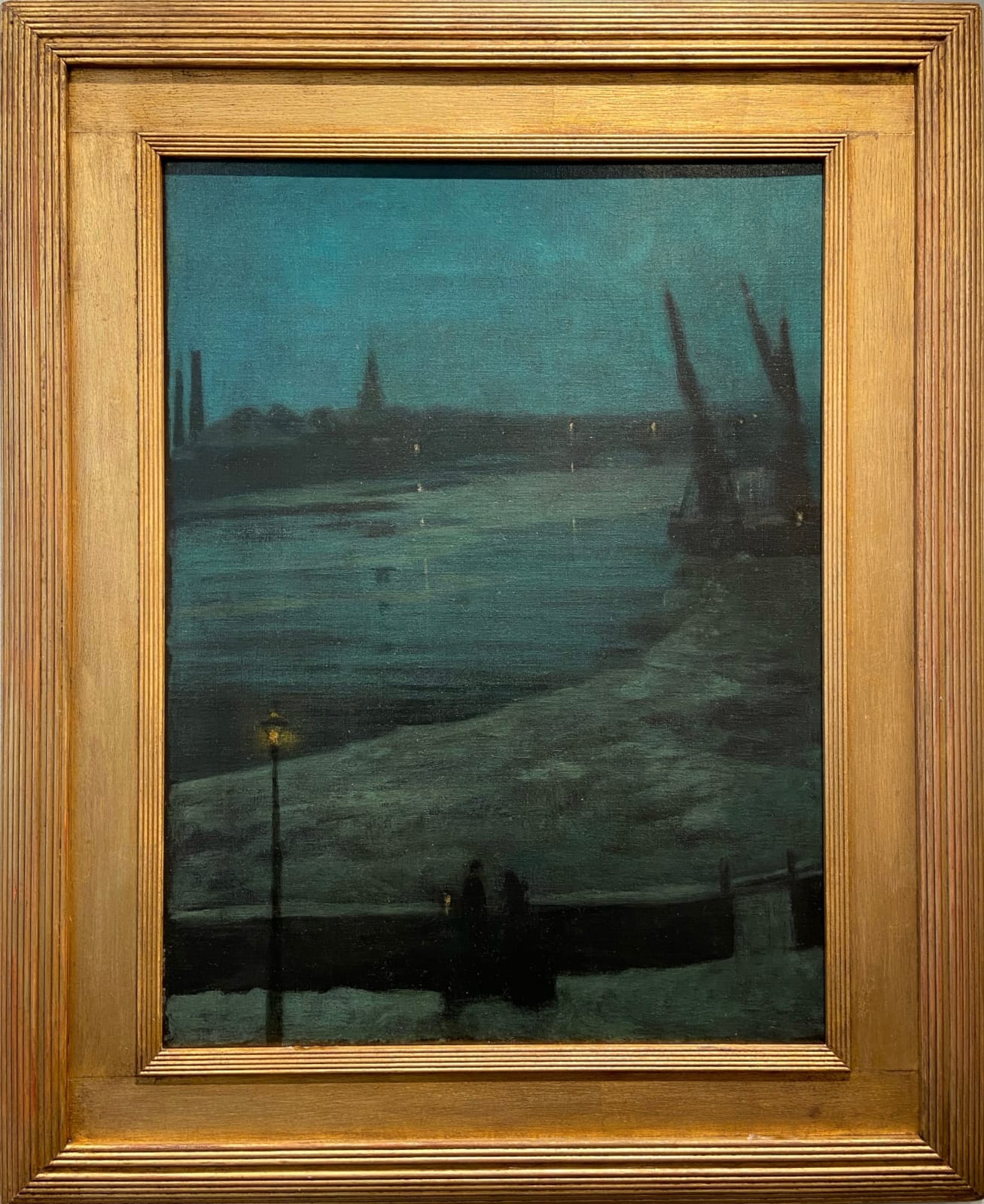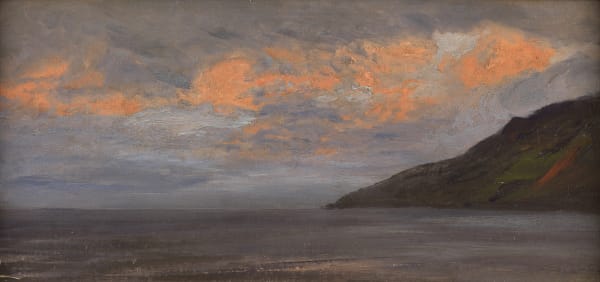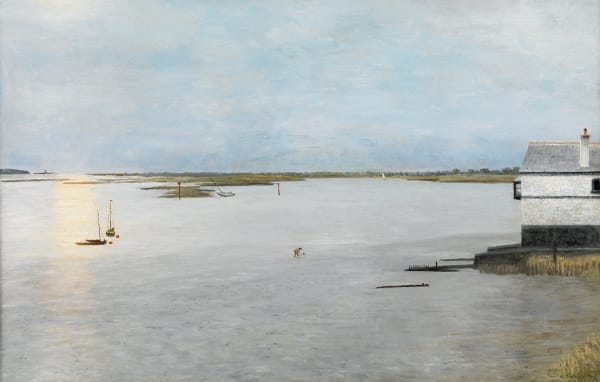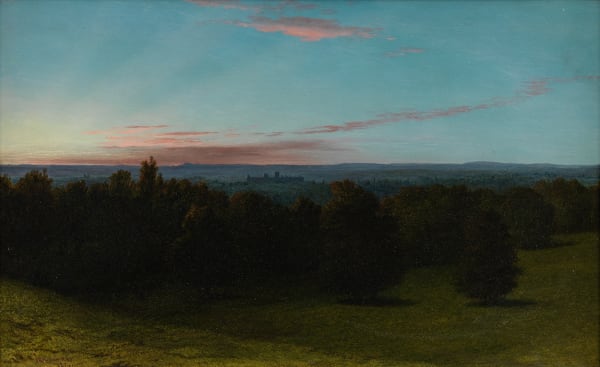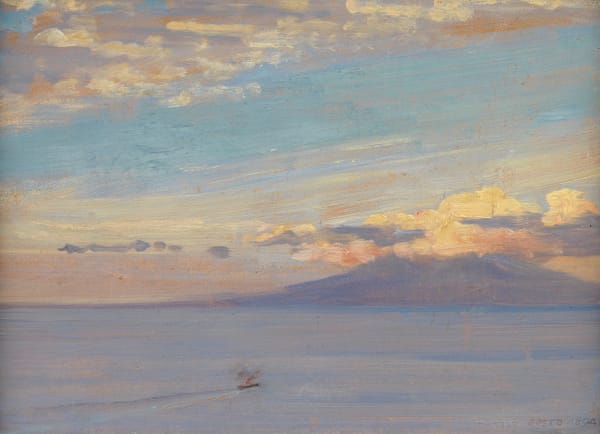Walter Greaves (1841 - 1930)
Provenance
Sotheby's, 23 June 1999, lot 6;
Private Collection, UK
Walter Greaves was the son of a Chelsea boatbuilder who had rowed Turner on the Thames. Whistler met him in 1863 and they became close friends, Greaves rowing Whistler out on painting trips at night, and also assisting in the studio. Before going out on the river, they prepared his canvases and set out the colours. Out in the boat, they would observe the ephemeral effects of the lights, the subtle textures and muted tones, and absorb them totally, and then, the moment Whistler got back to his studio and before going to bed, he would paint his famous ‘Nocturnes’ quickly in one sitting, aided and abetted by Greaves, and left them outside on his hedge to dry. He worked from memory in the studio, rather than outdoors directly from nature. These paintings were intended to evoke mood, like a piano piece by Chopin. By the late 1870s, Whistler had dropped Greaves, perhaps because of the increasingly not-so-humble boatman’s presumption (at one point he claimed that he had invented the Nocturne), and his hopes of mixing with Whistler’s sophisticated new friends. Greaves painted many pictures of his own in the manner of his hero, had exhibitions of them, and is represented in the Tate Gallery, but he has been systematically written out of Whistler’s story, first by Whistler’s biographers the Pennells, and since then by every other scholar. It could not have been otherwise, for the waters are muddied by claims that the two painters worked so closely together that their paintings are indistinguishable, especially since Whistler’s work was so uneven. Although it is certain the idea of the painted Nocturne was entirely Whistler’s (as were ‘Arrangements’ and ‘Harmonies’), the extent of Greaves’s involvement in the process in those early days remains unclear. A review of 1922 concluded that Greaves was ‘limited, provincial, naive: but his sincerity has a kind of greatness in it and makes even his inferior work interesting … when he is good he is very, very good; and when he is bad, he is still Greaves.’
-
 Jan Willem Sluiter (1873-1949)Eventide£4,800
Jan Willem Sluiter (1873-1949)Eventide£4,800 -
 Albert Moulton Foweraker (1873-1942)Moonlight - Alameda de Hércules, Seville£2,800
Albert Moulton Foweraker (1873-1942)Moonlight - Alameda de Hércules, Seville£2,800 -
 Henry Moore (1831-1895)Sunset on the Coast£4,800
Henry Moore (1831-1895)Sunset on the Coast£4,800 -
 Henry Mark Anthony (1817-1886)Melun, Daybreak.POA
Henry Mark Anthony (1817-1886)Melun, Daybreak.POA -
 Richard Eurich (1903-1992)Low Tide, Beaulieu River£6,800
Richard Eurich (1903-1992)Low Tide, Beaulieu River£6,800 -
 Edward Frederick Brewtnall (1846-1902)The Cloud's Turmoil, the Sun's Fierce Molten Fire
Edward Frederick Brewtnall (1846-1902)The Cloud's Turmoil, the Sun's Fierce Molten Fire -
 James Whitelaw Hamilton (1860-1932)Evening on the ClydePOA
James Whitelaw Hamilton (1860-1932)Evening on the ClydePOA -
 John Rogers Herbert (1810-1890)Near Llangollen, North Wales£8,200
John Rogers Herbert (1810-1890)Near Llangollen, North Wales£8,200 -
 Owen Baxter Morgan 1839-1917Ferry by Moonlight£1,800
Owen Baxter Morgan 1839-1917Ferry by Moonlight£1,800 -
 Herbert Dalziel (1853-1941)The New Suburb£3,500
Herbert Dalziel (1853-1941)The New Suburb£3,500 -
 Harold Speed (1872-1957)Vesuvius from Capri£6,500
Harold Speed (1872-1957)Vesuvius from Capri£6,500 -
 Albert Ludovici, Jnr. (1852-1932)Harmony in Black
Albert Ludovici, Jnr. (1852-1932)Harmony in Black
The Maas Gallery, 6 Duke Street, St. James's, London, SW1Y 6BN
+44 (0) 20 7930 9511 | mail@maasgallery.com
This website uses cookies
This site uses cookies to help make it more useful to you. Please contact us to find out more about our Cookie Policy.
